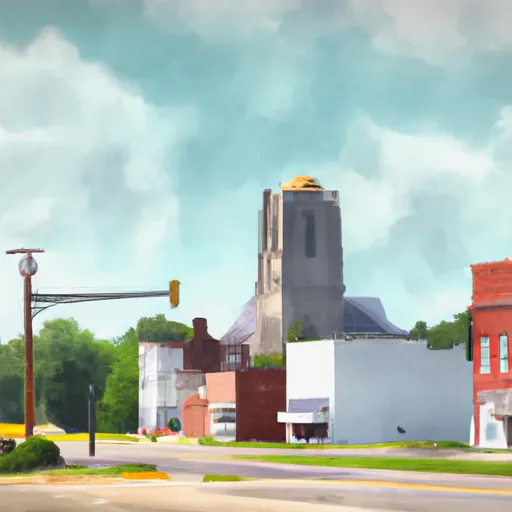-
 Snoflo Premium
Snoflo Premium
Get unlimited access to all our content
With no Ad interruptions! - Start Your Free Trial Login with existing account
Hardinsburg
Eden Index
Climate
8.1
•
Recreation
5.6
•
Community
•
Safeguard
5.2/10

Hardinsburg, Indiana is a small rural town located in the southern part of the state. The climate in Hardinsburg is classified as humid continental, with hot summers and cold winters. The town is situated near several creeks and streams, including Buck Creek and Indian Creek, which flow into the Ohio River. The area's hydrology constituents are largely influenced by agricultural activity and land use practices. Hardinsburg provides opportunities for a range of outdoor activities, including hunting and fishing in nearby state parks such as Patoka Lake, as well as hiking and camping opportunities in Hoosier National Forest. Visitors can also enjoy local festivals and events, including the annual Hardinsburg Mayfest.
What is the Eden Index?
The Snoflo Eden Index serves as a comprehensive rating system for regions, evaluating their desirability through a holistic assessment of climate health, outdoor recreation opportunities, and natural disaster risk, acknowledging the profound impact of these factors on livability and well-being.
Climate Health Indicator (CHI): 8.1
Hardinsburg receives approximately
1216mm of rain per year,
with humidity levels near 80%
and air temperatures averaging around
13°C.
Hardinsburg has a plant hardyness factor of
6, meaning
plants and agriculture in this region thrive during a short period during spring and early summer. Most
plants will die off during the colder winter months.
By considering the ideal temperature range, reliable water supplies, clean air, and stable seasonal rain or snowpacks, the Climate Health Indicator (CHI) underscores the significance of a healthy climate as the foundation for quality living.
A healthy climate is paramount for ensuring a high quality of life and livability in a region, fostering both physical well-being and environmental harmony. This can be characterized by ideal temperatures, reliable access to water supplies, clean air, and consistent seasonal rain or snowpacks.
Weather Forecast
Streamflow Conditions
Lower Ohio-Salt
Area Rivers
Lower Ohio-Salt
Snowpack Depths
Lower Ohio-Salt
Reservoir Storage Capacity
Lower Ohio-Salt
Groundwater Levels
Recreational Opportunity Index (ROI): 5.6
The Recreational Opportunity Index (ROI) recognizes the value of outdoor recreational options, such as parks, hiking trails, camping sites, and fishing spots, while acknowledging that climate plays a pivotal role in ensuring the comfort and consistency of these experiences.
Access to outdoor recreational opportunities, encompassing activities such as parks, hiking, camping, and fishing, is crucial for overall well-being, and the climate plays a pivotal role in enabling and enhancing these experiences, ensuring that individuals can engage in nature-based activities comfortably and consistently.
Camping Areas
| Campground | Campsites | Reservations | Toilets | Showers | Elevation |
|---|---|---|---|---|---|
| Cedar Point - Normandy Lake | None | 882 ft | |||
| Old Stone Fort State Park | 51 | 1,005 ft | |||
| Tims Ford State Park | 52 | 936 ft | |||
| Cedars of Lebanon State Park | 117 | 686 ft | |||
| Hardin Ridge | 200 | 780 ft | |||
| Barton Springs - Normandy Lake | 67 | 885 ft | |||
| Cages Bend - Old Hickory Lake | 43 | 477 ft | |||
| Cedar Creek - Old Hickory Lake | 60 | 459 ft | |||
| Bledsoe Creek State Park | 57 | 609 ft | |||
| Poole Knobs - J. Percy Priest Reservoir | 88 | 537 ft |
Nearby Ski Areas
Catastrophe Safeguard Index (CSI):
The Catastrophe Safeguard Index (CSI) recognizes that natural disaster risk, encompassing floods, fires, hurricanes, and tornadoes, can drastically affect safety and the overall appeal of an area.
The level of natural disaster risk in a region significantly affects safety and the overall livability, with climate change amplifying these risks by potentially increasing the frequency and intensity of events like floods, fires, hurricanes, and tornadoes, thereby posing substantial challenges to community resilience and well-being.
Community Resilience Indicator (CRI):
The Community Resilience Indicator (CRI) recognizes that education, healthcare, and socioeconomics are crucial to the well-being of a region. The CRI acknowledges the profound impact of these elements on residents' overall quality of life. By evaluating educational resources, healthcare accessibility, and economic inclusivity, the index captures the essential aspects that contribute to a thriving community, fostering resident satisfaction, equity, and social cohesion.

